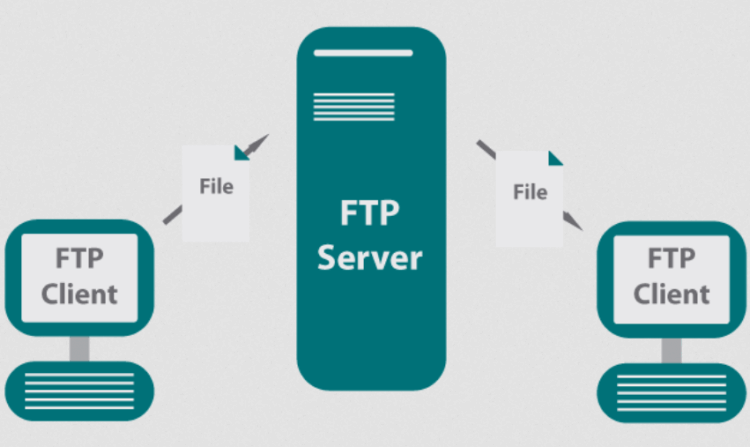Delve into the realm of FTP servers, where data transfer takes center stage. Discover the ins and outs of these servers, their crucial role in the digital landscape, and the secrets they hold for seamless file sharing.
Introduction to FTP Server
FTP server stands for File Transfer Protocol server, which is a type of server used to transfer files between a client and a server on a computer network. The primary purpose of an FTP server is to facilitate the exchange of files over a network, allowing users to upload, download, and manage files stored on the server.FTP servers are commonly used in various scenarios, such as website development, software distribution, and data backup. They play a crucial role in enabling efficient and secure file transfers between different devices and locations.Importance of FTP Servers in the Digital World
- FTP servers provide a reliable and efficient way to transfer large files over the internet, which is essential for businesses and individuals who need to share data regularly.
- They offer a secure method of transferring files, ensuring that sensitive information is protected during transmission.
- FTP servers allow for easy access and management of files stored on a server, making it convenient for users to organize and retrieve their data.
- They play a vital role in enabling collaboration among team members working remotely, as files can be shared and accessed from anywhere with an internet connection.
Types of FTP Servers
FTP servers come in various types, including open-source and commercial options. Each type has its own set of advantages and disadvantages, catering to different needs and preferences in the realm of file transfer protocols.Open-Source FTP Servers
Open-source FTP servers are freely available for download and use. They are developed by a community of contributors and allow users to modify and customize the software according to their requirements. Examples of open-source FTP servers include FileZilla Server and vsftpd.Commercial FTP Servers
Commercial FTP servers are proprietary software solutions that are often backed by professional support services. These servers typically offer advanced features, security enhancements, and scalability options for businesses with specific needs. Examples of commercial FTP servers include Cerberus FTP Server and Globalscape EFT.FTP, FTPS, and SFTP Servers
FTP (File Transfer Protocol), FTPS (FTP Secure), and SFTP (SSH File Transfer Protocol) are all protocols used for transferring files over a network. The main differences lie in their security mechanisms and authentication methods.- FTP: FTP is the standard protocol for transferring files, but it lacks encryption, making it vulnerable to security threats.
- FTPS: FTPS adds a layer of security by using SSL/TLS encryption to protect data during transit. It requires a digital certificate for authentication.
- SFTP: SFTP is a separate protocol that utilizes SSH (Secure Shell) for secure file transfer. It provides strong encryption and authentication mechanisms, making it the most secure option among the three.
It is essential to choose the right protocol based on your security requirements and compliance standards.
Pros and Cons of Each Type of FTP Server
When considering the type of FTP server to use, it is crucial to weigh the pros and cons of each option to make an informed decision.- Open-Source FTP Servers:
- Pros: Free to use, customizable, community support.
- Cons: Limited features, may lack professional support.
- Commercial FTP Servers:
- Pros: Advanced features, professional support, enhanced security.
- Cons: Costly, proprietary software restrictions.
- FTP, FTPS, and SFTP Servers:
- FTP: Easy to use, but lacks encryption.
- FTPS: Secure file transfer with SSL/TLS encryption.
- SFTP: Most secure option with SSH encryption, but may require additional configuration.
Setting Up an FTP Server
Setting up an FTP server involves a few key steps to ensure smooth operation and secure file transfer. Let's delve into the process, discussing software and hardware requirements as well as security considerations.Software and Hardware Requirements
To set up an FTP server, you will need specialized software that allows for FTP connections. Popular choices include FileZilla Server, ProFTPD, and vsftpd. These programs are designed to facilitate file transfer over FTP protocols. Additionally, you will need a stable internet connection and a dedicated server or computer to host the FTP server.Security Considerations
When setting up an FTP server, security should be a top priority to protect sensitive data and prevent unauthorized access. Here are some key security considerations to keep in mind:1. Implement strong password policies to ensure secure access to the FTP server.
2. Enable encryption protocols like SSL/TLS to secure data transmission between the server and clients.
3. Regularly update the FTP server software to patch any security vulnerabilities and ensure optimal protection.
4. Restrict access to specific directories and set user permissions to control who can upload, download, or delete files.
5. Monitor server logs for any suspicious activity and set up intrusion detection systems to detect and prevent potential security threats.
Managing FTP Users and Permissions
Creating and managing FTP user accounts and setting up proper permissions are crucial aspects of running an FTP server efficiently. Here's how you can effectively manage FTP users and their access levels:Creating FTP User Accounts
To create FTP user accounts, you can use the administrative interface of your FTP server software. Typically, you will need to provide a username and password for each user. It's essential to choose strong passwords to ensure the security of your server.Setting Up Permissions
Permissions control what actions a user can perform on the server. It is important to set up permissions correctly to prevent unauthorized access and ensure data security. You can assign read, write, or delete permissions to users based on their roles and responsibilities.Best Practices for Managing FTP Users
- Regularly review and update user accounts to remove inactive or unnecessary users.
- Implement strong password policies to enhance security.
- Use role-based access control to assign permissions based on job roles.
- Monitor user activities and audit logs to detect any suspicious behavior.
- Restrict access to sensitive data by limiting permissions to only necessary files and directories.
Securing an FTP Server
When it comes to securing an FTP server, it is crucial to be aware of the common security threats that can compromise the integrity of your data. By implementing encryption and firewall settings, along with following best practices for maintaining security, you can significantly reduce the risk of unauthorized access and data breaches.Common Security Threats to FTP Servers
- Brute force attacks: Hackers attempt to gain access by trying multiple username/password combinations.
- Eavesdropping: Data transferred over FTP can be intercepted and read by unauthorized parties.
- Injection attacks: Malicious code or commands can be inserted into the FTP server to exploit vulnerabilities.
Securing an FTP Server with Encryption and Firewall Settings
- Use SSL/TLS encryption: Encrypt data transfers to prevent eavesdropping and ensure secure communication.
- Implement strong password policies: Enforce complex passwords and regular password changes to deter brute force attacks.
- Enable firewall rules: Restrict access to the FTP server by allowing only authorized IP addresses to connect.
Tips for Maintaining the Security of an FTP Server
- Regularly update software: Keep the FTP server software up to date to patch any vulnerabilities.
- Monitor server logs: Review logs for any suspicious activity or unauthorized access attempts.
- Limit user permissions: Assign specific permissions to users based on their roles to minimize the risk of data exposure.
Troubleshooting FTP Server Issues
When using an FTP server, users may encounter various issues that can disrupt file transfers and connectivity. It is essential to identify and address these problems promptly to ensure smooth operation of the server. Let's explore common FTP server issues and solutions to troubleshoot them effectively.Connection Issues
- Check network connectivity: Ensure that the server and client devices are connected to the network properly.
- Firewall settings: Verify that the firewall settings allow FTP traffic through the designated ports.
- Incorrect login credentials: Double-check the username and password entered for authentication.
File Transfer Problems
- File permissions: Make sure that the files being transferred have the necessary permissions set for access.
- Data transfer mode: Switch between active and passive mode to troubleshoot data transfer issues.
- File size limitations: Check if there are any restrictions on file sizes that may be causing transfer failures.
Diagnostic Tools and Techniques
- FTP client logs: Review the logs generated by the FTP client to identify any error messages or warnings.
- Packet sniffers: Use packet sniffing tools to analyze network traffic and pinpoint any anomalies affecting FTP connectivity.
- Port monitoring: Monitor the FTP server ports to ensure they are functioning correctly and are not blocked.








